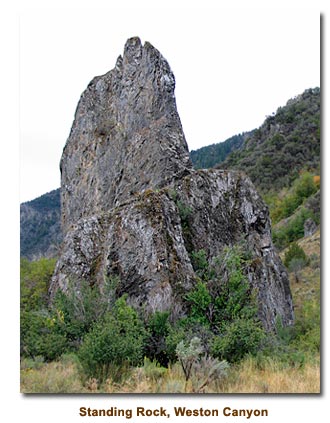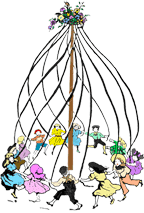Captain Charles Fremont Visits Cache Valley in 1843
In the summer of 1843, Captain John Charles Fremont extended his exploring and scientific expedition through Wyoming, northern Utah, Idaho and Oregon. May 29th, 1843, the expedition started and its route was along the line of the Kansas River to the mouth of the Republican Fork, which it followed some distance and thence across the country to the St. Vrain’s Fort, on the south fork of the Platte River. July 6th, the party left the fort and continued up the Platte River and on the 14th the Boiling Spring River was reached where it enters the Arkansas River. At this place the services of the famous Indian Scout, Kit Carson, were secured. The party followed the river between the Black Hills on one side and the Pine Hills on the other.
Fremont was looking for a pass through the Rocky Mountains that would make a good trail for the emigrants to the west and he therefore decided to traverse the eastern side of the Medicine Bow Mountains. He went through the Medicine Butte Pass and followed the Platte and Sweet Water Rivers and crossed the dividing ridge along the southern border of the South Pass. He then directed his course westward and on August 21st reached the Valley of the Bear River in Wyoming.
He traveled the Bear River Valley along the old Oregon Trail and enroute met with a number of emigrants who were on their way to the west. The party made a stop for several days at the Soda Springs which Fremont called the Beer Springs. He analyzed the water and was quite impressed with the mineral found in it. He also visited the spring just below the Soda or Beer Springs and called it the Steam Boat Spring. The party followed the course of Bear River to the point where the trail leaves for the northwest and here Fremont decided to send part of the company to Fort Hall for provisions and he, with the others, would continue to follow the course of the river and see the Great Salt Lake where the river emptied. They traveled through what is known as Gentile Valley and visited with several Indian villages on the way. Near the sough entrance of the Gentile Valley, Fremont and his company ascended a high peak and he then, for the first time, beheld the broad and fertile Cache Valley as he then described it. He did not follow the course of Bear River through Cache Valley, but took off to the west and entered the Malad Valley through the canyon just west of where Weston, Idaho, is now located. In this canyon he passed the Standing Rock and made special mention of it and also produced a picture of it in his memoirs. This rock still stands today and reminds one of a high castle and it appears to have fallen from one of the cliffs several thousands feet above and stood on its end quite a distance in the ground where it has remained ever since.
As to the Indian life at the time, Fremont says: “We had now entered a country inhabited by these people and in the course of our voyage we shall frequently meet with them in various stages of existence, it will be well to remark that, scattered over the great region west of the Rocky Mountains and south of the Great Snake River, are numerous Indians whose subsistence is almost solely derived from roots, seeds and such small animals as chance and good fortune sometimes bring within their reach. They are miserably poor, armed only with bows and arrows, or clubs; and as the country they inhabit is almost destitute of game, they have no means of obtaining better arms. In the northern part of the region just mentioned, they live generally in solitary families and further to the south they are gathered together in villages.”
“Those who live together in villages, strengthened by association, are in exclusive possession of the more genial and richer parts of the country, while the other are driven to the ruder mountains and to the more inhospitable parts of the country; but simply observing in accompanying us along our road, will give to the reader a better knowledge of these people that I could give in any other than a lengthened description”
“Roots, seeds and grass, every vegetable that affords any nourishment, and every living animal thing, insect or worm, they eat. Nearly approaching to the lower animal creation, their sole employment is to obtain food; and they are constantly occupied in a struggle to support existence.”
Fremont and his party entered the Malad Valley and followed the Malad River which he called the Reed River, to where it empties into Bear River. He then followed the Bear River until he arrived on the shores of the Great Salt Lake where he repaired his rubber boat and went across the Lake to Antelope Island and did some exploring. He then went north to Fort Hall to join the other members of his party for their journey to the northwest.
